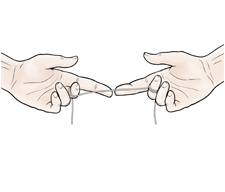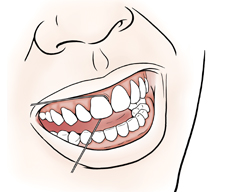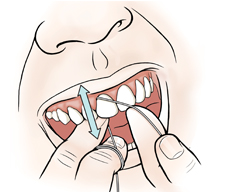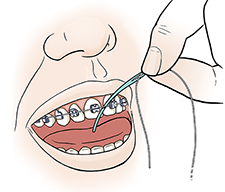How to Floss Your Teeth
Floss at least once a day to remove plaque between the teeth and below the gums. Start at one place and work all the way around your mouth. Floss between each tooth as shown below. Also floss the backside of your last teeth.
3 easy steps to flossing your teeth
Step 1.

Step 2.
-
Ease the floss between your teeth.
-
Press it against 1 side, then the other, to form a C-shape.

Step 3.
-
Gently work the floss up and down.
-
Make sure you go below the gumline where plaque collects.
-
Go back to step 2 and do the other side of the tooth.
-
When you are done, throw the floss away.

If you have a bridge or wear braces, use a floss threader to get the floss under the bridge or the wires.

Why floss?
Flossing every day will help keep your teeth and gums healthy. Flossing may help prevent cavities and gum disease by removing plaque, which contains bacteria. Having clean teeth also makes you look and feel better. Your breath is fresher. Your smile is brighter. And your teeth feel smooth.
Fighting plaque
Many kinds of bacteria live in your mouth. These germs collect on your teeth and gums. They quickly form a sticky film called plaque. Plaque is the major cause of tooth decay and gum disease. Plaque is always forming. So it needs to be removed every day. Brushing removes plaque from tooth surfaces and around the gumline. Flossing breaks up plaque between teeth and under gums.
© 2000-2025 The StayWell Company, LLC. All rights reserved. This information is not intended as a substitute for professional medical care. Always follow your healthcare professional's instructions.